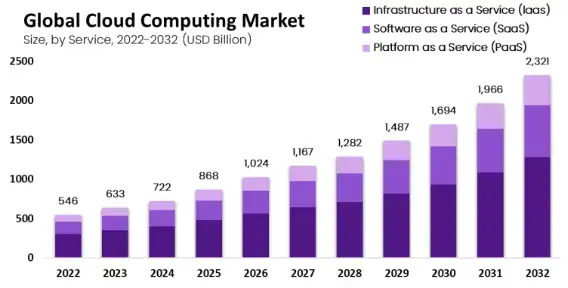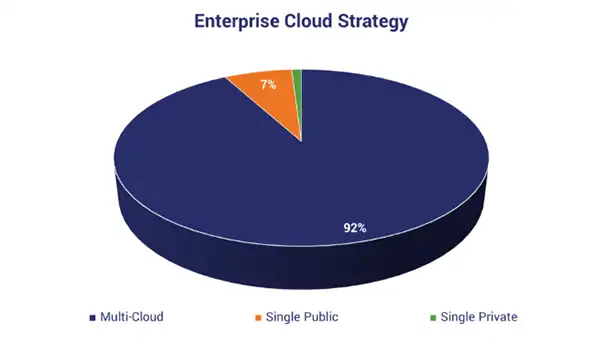Key Takeaways
- Cloud Computing is the cornerstone of companies that want to have an edge in this continuously evolving world.
- Setting realistic cost expectations helps in sticking to the budget.
- Finding the right balance between downsizing and rightsizing is the key to efficient cost management.
- Educating your staff regarding cloud billing can enhance decision-making.
- Embracing a multi-crowd approach allows organizations to achieve improved cost control.
In the age where the digital landscape is constantly changing, cloud computing has become the backbone of countless businesses, enabling them to scale, innovate, and stay competitive.
However, its allure can quickly diminish when cloud costs spiral out of control, jeopardizing budgets and hindering growth.

This article aims to provide you with a comprehensive guide to cloud cost management, empowering you to make informed decisions, optimize spending, and enhance overall performance.
A budget is telling your money where to go instead of wondering where it went. Before starting on this journey, it is pertinent to establish realistic cost expectations. It is an intricate process and requires religious planning.
Cloud services have unique pricing structures that can surprise organizations if not anticipated correctly. Think of it as a tool, where you first figure out your existing resources and then evaluate what operations would be requisite over the course.
A pivotal aspect of budgeting involves comprehending the pay-as-you-go model and predicting future expenses. Analyzing past usage patterns and grasping various pricing models help in developing an informed budget aligned with your business objectives.
Cloud billing can quickly become overwhelming, especially in complex multi-cloud environments. To effectively manage the prices, simplifying invoicing complexities is important.
One approach is to consolidate invoices and implement centralized invoice systems. Moreover, utilizing cost management tools can provide clear insights into its expenditures.
Regularly reviewing and optimizing billing practices can result in substantial savings and a more transparent pricing structure.
Do You Know?
The cloud computing market is estimated to grow at a CAGR of 17.9% by 2027.
Organizations often employ two approaches, rightsizing, and downsizing, to effectively manage cloud costs.
Rightsizing involves optimizing cloud resources based on actual usage to ensure you neither overspend nor underutilize these resources. On the other hand, downsizing entails reducing resources to decrease expenses.
The cloud environment is not one size fits all. Maybe what works for others, may not work for you. So in a way, rightsizing gives a clear grasp of the type of resources that you should use.
Striking the perfect balance between these two methods is vital for efficient budgetary control. Utilizing monitoring tools related to it can assist in identifying over-provisioned resources, enabling you to achieve an optimal blend of cost-efficiency and performance.
Hidden prices can significantly impact your cloud budget, and they often lurk in the shadows, undetected. Identifying and eliminating waste is a key aspect of effective cloud cost management.
This includes identifying idle resources, zombie assets, and unnecessary data storage. Employing automated monitoring and employing policies for resource disposal can aid in keeping your cloud environment lean and economical.
Do You Know?
According to a recent survey, 30% of cloud spend is wasted.
Cost consciousness should be ingrained in your organizational culture. Your team plays a vital role in managing its cost efficiency. Educating and training your staff in understanding cloud billing, resource usage, and the importance of its optimization can enhance decision-making and foster accountability.
Moreover, rewarding initiatives that save money can further motivate employees to actively contribute to the organization’s efforts in managing expenses.
As businesses expand, the adoption of multi-cloud strategies has gained popularity.
This outlook leverages two or more cloud computing services from cloud providers. Remember that these should align with the organization’s private cloud capabilities.
While these environments bring numerous benefits, they also pose challenges in managing the amount.
To ensure pocket-friendly options, it is paramount to carefully select providers and optimize workload distribution. Embracing this approach allows organizations to harness the strengths of various providers while minimizing the risk of reliance on a single vendor and achieving improved cost control.

Nine out of ten companies are using this approach, and within it, 80% of them have a hybrid cloud strategy in order.
Although there are positive aspects to this style, there exist some downsides to it. For instance, the workload in this computing technique can be a challenge as the data is transformed from one cloud platform to another.

The cloud landscape is continually evolving, and so are the approaches to cost management. As technologies advance, new trends emerge.
This section highlights some future trends in cloud cost operation, such as the rise of serverless computing, containerization, and AI-driven cost optimization tools. Staying informed about these developments can proactively prepare your organization for the challenges and opportunities that lie ahead.
Effective handling of cloud costs is pivotal for businesses seeking to maximize the advantages of its technology while ensuring financial stability. By establishing realistic pricing expectations, simplifying invoice processes, and striking a balance between optimizing resources and downsizing where necessary, organizations can optimize their expenditure in this technology.
Besides, identifying hidden expenses, providing cost-consciousness training to your team, and embracing multi-cloud strategies contribute to enhancing cost-effectiveness. Furthermore, staying informed about future trends ensures that your organization remains well-prepared for its ever-evolving landscape.
Cloud billing and cost consciousness should not be viewed as isolated responsibilities within your organization. Instead, they should be embraced collectively.
Adopting a proactive and data-driven approach, can effectively navigate the complexities of cloud cost administration and pave the way for sustainable growth and success in the digital era. And don’t forget to include Finout in your toolbox of cost management tools.
